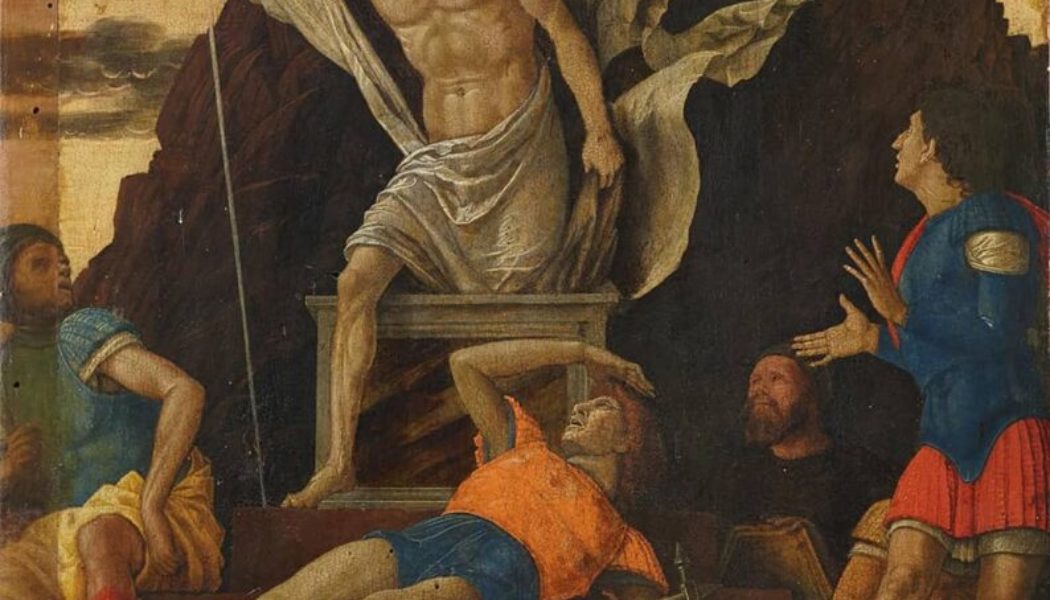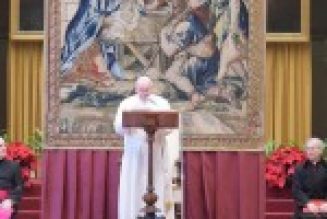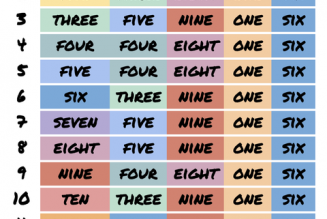“Are you saved?” This is something you might hear after the doorbell rings. “What does that even mean?” you might wonder, as you think of what to say in response. The door-to-door evangelist would tell you that Jesus died to forgive your sins and if you believe the truth of that statement, you will be saved. That is an important part of salvation but by no means the full account. To be saved is not simply to have your sins forgiven or to be given a ticket to heaven, because God wants more for you. Jesus gives the best explanation of salvation: “I came that they may have life, and have it abundantly” (Jn 10:10).
Throughout Lent we have been journeying with Christ, taking up our Cross each day through prayer, penance, and almsgiving. The goal of Lent is similar to the goal of salvation: to have life. Lent arose originally as a time of intense preparation for baptism for those catechumens preparing to enter the Church. The rest of the faithful began joining in to prepare to renew their baptismal promises at Easter alongside of them. Lent is a time to embrace the Cross, to set aside our sins, so that we can enter into the life of Easter with peace and joy.
The Cross certainly marks a turning point, removing the obstacle of sin that placed an infinite distance between us and God. The Cross reconciles us so that, as Paul says, we become friends with God when once we were his enemies. St. Athanasius points out, however, that the Son of God came into the world for the Resurrection: “For by the sacrifice of His own body, He both put an end to the law which was against us, and made a new beginning of life for us, by the hope of Resurrection which He has given us” (On the Incarnation). In fact, the Resurrection initiates a whole new creation, raising us up from the life of the world to a life in the Spirit.
The Resurrection restored life not only to Jesus’ earthly body; it also marked the beginning of a new life for all those who believe in him and become members of his mystical body, the Church. The Resurrection goes beyond one moment in time, as Jesus says that he himself is the Resurrection. To those who believe, there is no more death, even if we still have to experience a temporary passage from this world to the next: “I am the resurrection and the life; he who believes in me, though he die, yet shall he live, and whoever lives and believes in me shall never die” (Jn 11:25-26). The Resurrection should give us confidence that death no longer has the last word. We should not fear it, because we know that the best is yet to come!

But, what about the here and now? Jesus’ new life begins for us even now. We walk no longer in darkness but have the light of life. Jesus has laid out a path for us, showing what will truly give us joy and happiness. When Jesus said that he has overcome the world, he meant that he has given us a true freedom in him that delivers us from the anxiety of the world. He doesn’t promise us a perfect world, but rather union with him as we journey through it. If we put our hope in security or pleasure in the present, we will be miserable! The freedom of new life in Christ is knowing that we belong with Jesus, who is now sitting at the right hand of the Father as our king. It is knowing that our lives have meaning and purpose and that this cannot be taken away. ⊲
The Resurrection should give us joy, knowing that Jesus has won the victory over sin and death and has given his own life to us. The victory is not something that happened 2,000 years ago, as it is made present to us every Sunday, the day of the Resurrection. Jesus gives us his own living flesh to make the Resurrection real within us. The Eucharist makes us more than mortal: “I am the living bread which came down from heaven; if any one eats of this bread, he will live forever” (Jn 6:50). The Eucharist changes us from the inside out, giving us Christ’s own life and joy and even guaranteeing that our own flesh will live forever with him. Through the Eucharist, we can say with Paul that “it is no longer I who live, but Christ who lives in me; and the life I now live in the flesh I live by faith in the Son of God, who loved me” (Gal 2:20).
We know that we are celebrating Easter properly if we experience the joy of Jesus’s gift of life to us. After dying to ourselves during Lent, we should be ready to celebrate — not by going back to our old ways but by living differently with the new leaven that transforms everything that we do. A life in the Resurrection is centered on Christ, relying on him for everything and giving him glory in all that we do. Even if the world is falling apart around us, we are not living for this world (even as we do our part to bail it out!). Even if we are suffering, we should not fear, because, through the Resurrection, there is a place for us, forever. Our lives have a purpose that will bear fruit in eternal life. The devil wants to hold us back, trapping us with anxiety and fear, but Jesus says “have no fear!” (Mt 14:27). The Resurrection is our ultimate hope, knowing that Jesus has won the victory for us and that he is with us every step of the way.
– Advertisement –
All of this brings us back to that quintessential question: “Are you saved?” As Catholics, we should be able to answer with a confident and resounding “Yes!” Jesus has given me his own life and I won’t let go of it! I may be a work in progress, but, Jesus, I trust in you! Help me to keep my eyes fixed on you and prevent me from falling into anxiety and a life that seeks comfort. Please transform me from the inside out and make me into your likeness. Help me to live differently right now and to have confidence in the place you have prepared for me in heaven. Above all, Jesus, please raise me up on the last day so that I can share in your resurrected life for all of eternity. Amen!
Join Our Telegram Group : Salvation & Prosperity









